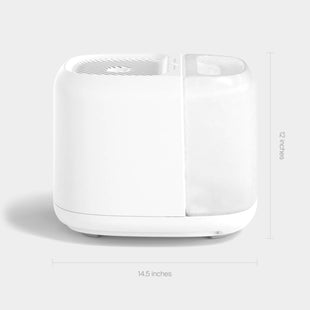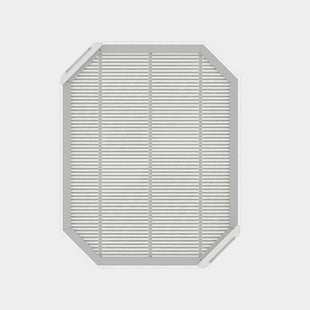While the elevated temperatures of late spring and summer provide newfound motivation for water sports, outdoor BBQ’s, and frozen treats of all varieties, these toasty months bring an unwanted companion: high humidity.
Humidity is a wonderful phenomenon by way of humidifiers in the winter months, but how do you cope with the excess humidity of summer? Chances are, research led you to dehumidifiers as your home dehumidifying solution. But, as with most research on the Internet, you may have been left with more questions than answers like: what size dehumidifier do I need? Can I use a dehumidifier for a small bedroom effectively? Will a dehumidifier in the basement help with a water leak? Do I need a special dehumidifier for a large bedroom?
Have a question about dehumidifiers? We will cover all of your major questions and concerns regarding these nifty little (or big) devices so that you can spend more time enjoying your summer and less time worrying about mold, mildew, and other unmentionables.
What is a Dehumidifier?
A dehumidifier is a device intended to reduce moisture levels in a specific location of the home, office, or any enclosed space.
When moisture levels exceed 60% relative humidity, the environment becomes susceptible to mold and mildew, which can become dangerous in large quantities, particularly for asthma and allergy sufferers or infants or small children.
A dehumidifier can reduce the humidity of a space to lessen the likelihood of mold or mildew forming on surfaces, fabric (including curtains, bedding, etc.), or in the nooks and crannies of a room.
How Does a Dehumidifier Work?
A dehumidifier, in a way, works like an AC unit (this is why running your AC during the summer months not only keeps you cool, but can reduce the humidity levels in your home, too!). Air from the surrounding environment is drawn into the dehumidifier and passed through cooled metal coils, which condense water vapor into its liquid form. The water is stored in a water tank while the now dry air is fanned back into the room. When the dehumidifier water tank is filled to the brim with condensed moisture, it must be dumped and replaced to continue the dehumidifying process.
Not all dehumidifiers are created equal. Some dehumidifiers for small bedrooms will only reduce the moisture for a small space while industrial dehumidifiers for large bedrooms, or generally large spaces, are more costly and may be unnecessary for a small to medium-sized space.
Dehumidifier Sizing Guide
Are you looking for a dehumidifier for your basement after a pipe leak? Or, maybe a dehumidifier for your baby’s nursery during the summer months when poor insulation amplifies moisture to an unhealthy level?
The type of dehumidifier that is best for your home is largely dependent on your intended use. A portable dehumidifier for a large room or office space is unnecessary for a bathroom, but may be useful if you plan to move your dehumidifier to your living room or a large shared space as needed.
Dehumidifier for Small Rooms

If you intend to use your dehumidifier for a small bedroom, say a child’s nursery, a bathroom, or a laundry room, there are a few factors to consider.
You must first determine the square footage of the room (or rooms) you plan to dehumidify. If the room is less than 500 square feet, a portable dehumidifier with a 1 gallon (8 pint) or less pint removal capacity will suffice. The pint removal capacity refers to the total amount of moisture a dehumidifier can remove from a space.
Dehumidifier size is another factor to consider when making your selection. If placing the dehumidifier in a high traffic room, a bulky dehumidifier can overwhelm the space and create a tripping hazard.
Dehumidifier for Large Bedrooms
A dehumidifier for a large bedroom or communal space like the living room or the kitchen will require a slightly higher pint removal capacity than a dehumidifier for a small bedroom.
Look for a dehumidifier with a 10 pint removal capacity for a 500 square foot room. If your room exceeds 500 square feet, you want an additional 4 pints for every 500 square feet. If your room is 1,000 square feet, for example, you want at least a 14 pint removal capacity to maximize moisture removal.
If you prefer to dehumidify your entire home, you can try our steps for dehumidifying a space without a dehumidifier. If moisture problems still persist, you can invest in an industrial-level dehumidifier. An industrial-level dehumidifier will connect to your HVAC system and remove moisture from your entire home effectively.
Dehumidifier for Basement

In the case of a pipe burst or leak, you can prevent massive water damage by acting fast. Using a dehumidifier for basement floods or leaks can zap excess moisture quickly to avoid mold and mildew growth, which will cost a pretty penny to treat if left unattended for an extended period of time.
While a dehumidifier for a large bedroom with a 14 pint removal capacity would certainly suffice for most basements, an additional feature to consider when using a dehumidifier for water damage is a direct drain function. Instead of having to remove the water tank frequently to remove water condensation, a dehumidifier with a direct drain function connects to your existing drainage system to eliminate the need for tedious water tank dumps.
You may also want to consider a dehumidifier with a built-in hygrometer reading, especially when navigating water damage. It can be difficult to determine when moisture levels reach appropriate (and safe) levels without a hygrometer reading, which can cause a premature conclusion to moisture removal treatment.
To Dehumidify or Not to Dehumidify?
Too much of a good thing can be a bad thing, bluntly stated. A dehumidifier is a handy tool, particularly during the summer months when humidity runs rampant or in the case of a flooding or water leak. However, some humidity is a really good thing for your overall health and general comfortability.
Optimal humidity levels range from 40% to 60% depending on your preference and personal comfortability. It is only when humidity levels regularly exceed 60% that you need to introduce a dehumidifier into your space.






























